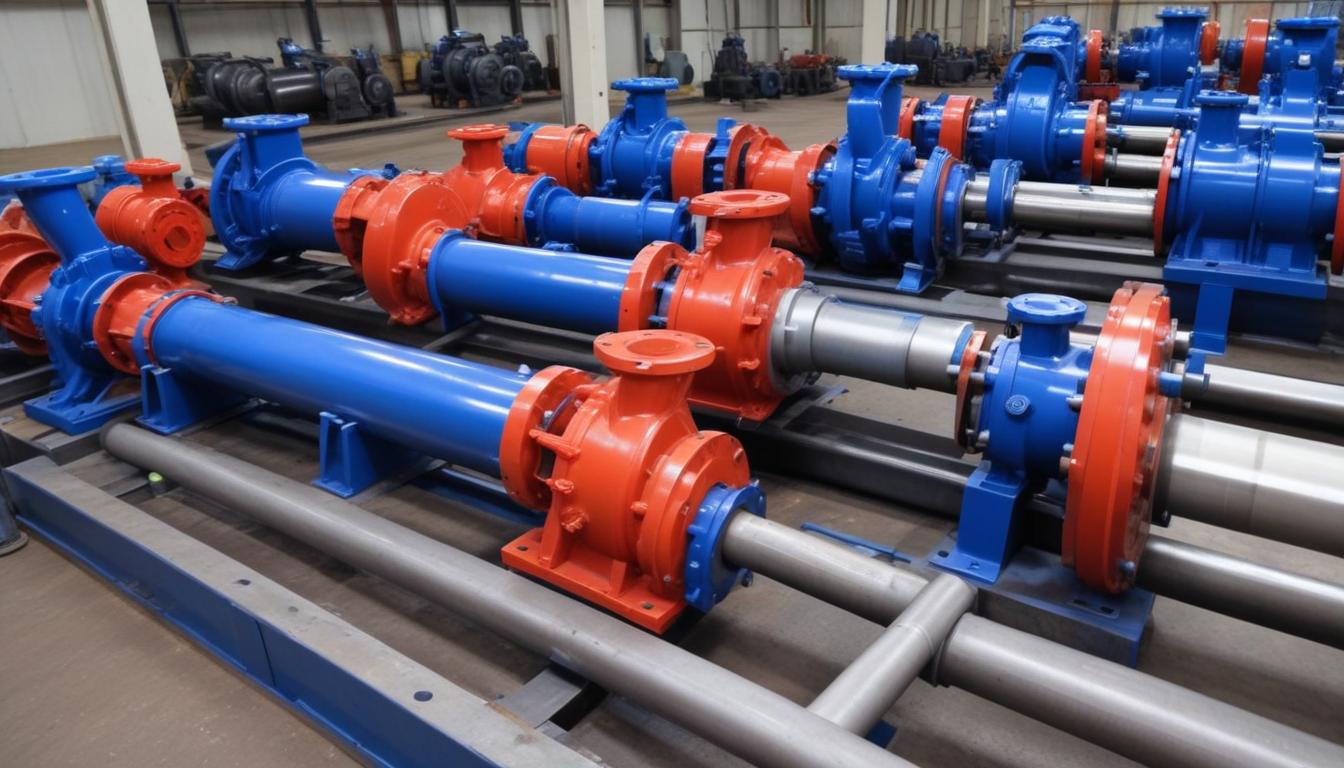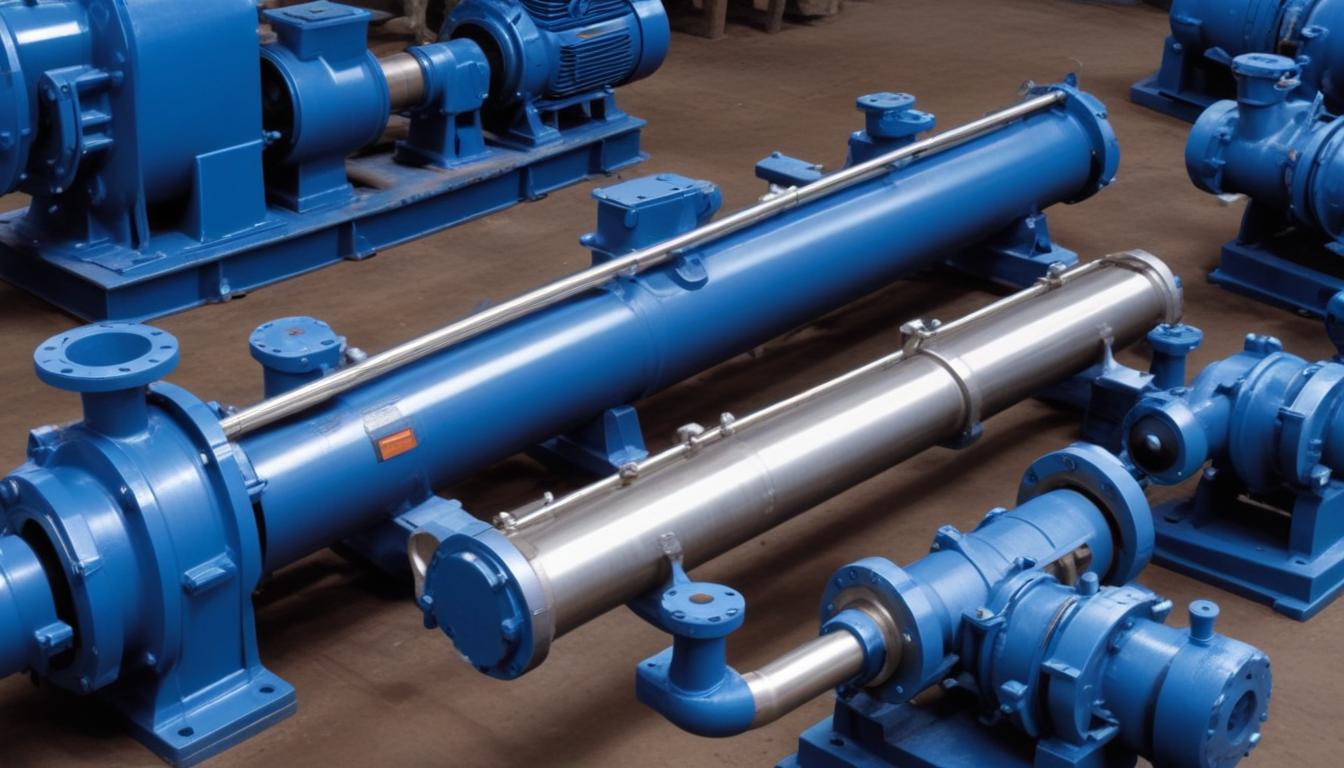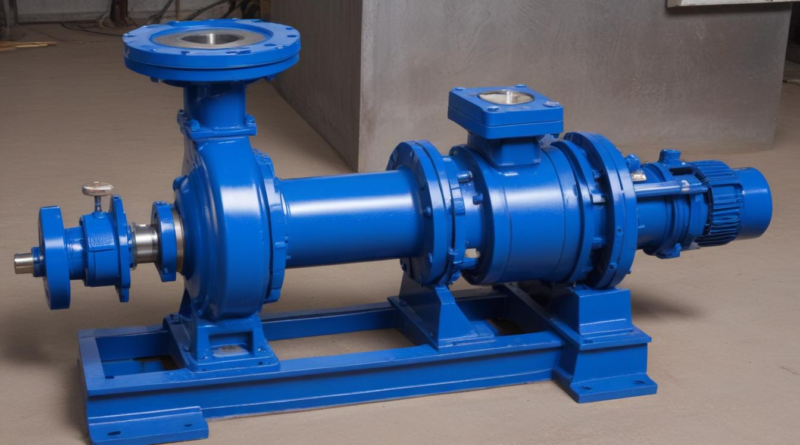Progressive cavity pumps vs centrifugal pumps: pros and cons
Progressive cavity pumps are positive displacement pumps that utilize a helical rotor rotating within a stator to move fluids. This design enables a smooth and continuous flow, making them ideal for handling viscous, shear-sensitive, or abrasive materials. The unique geometry of progressive cavity pumps allows for a gentle pumping action, which minimizes the risk of damaging the pumped fluid, essential for applications in the food, chemical, and wastewater industries. These pumps operate efficiently over a range of flow rates and pressures without requiring a constant supply pressure, resulting in lower energy consumption compared to other options.
One of the significant benefits of progressive cavity pumps is their ability to handle a wide variety of fluids, including slurries with high solid content. Their versatility is supported by a wide range of rotor and stator materials, allowing users to tailor the pump to specific applications and conditions. Additionally, they function effectively in environments with varying temperature and viscosity levels, contributing to their popularity in various sectors.
The operational principles of progressive cavity pumps involve the formation of cavities that trap the pumped fluid and move it through the discharge port with minimal pulsation. This feature is particularly advantageous when a steady flow rate is critical. Moreover, progressive cavity pumps can easily handle backflow and operate at low NPSH (Net Positive Suction Head) conditions. These abilities make them indispensable in many engineering applications, where precision and reliability are paramount.
In a comparison with centrifugal pumps, progressive cavity pumps demonstrate superior performance in delivering consistent flow rates under varying conditions, especially for applications involving non-lubricating or high-viscosity fluids. Understanding the operational mechanics and advantages of progressive cavity pumps is crucial for engineers and pump users when selecting the right equipment for their specific needs.
Centrifugal pumps explained
Centrifugal pumps are a type of mechanical device that convert rotational kinetic energy, typically from an electric motor, into hydrodynamic energy within a flowing fluid. They operate on the principle of centrifugal force, which is generated by an impeller spinning within a casing. When the impeller rotates, it imparts velocity to the fluid, which is then converted into pressure energy as the fluid exits through the pump’s volute or diffuser. This design results in a high flow rate, making centrifugal pumps particularly effective for moving large volumes of low-viscosity liquids.
The operational efficiency of centrifugal pumps can be attributed to their simple construction and fewer moving parts compared to progressive cavity pumps. They generally have a streamlined design that allows for easy maintenance and servicing, which appeals to engineers looking for reliable solutions in applications such as water supply, HVAC systems, and industrial processes. Given their capability to adapt to various fluid types, including clean water, chemicals, and light oils, centrifugal pumps prove to be versatile equipment for numerous industries.
One of the notable features of centrifugal pumps is their ability to handle large flow rates. They can be scaled up effectively to meet varying operational demands, and most designs ensure a continuous flow, which is beneficial in systems where steady delivery is critical. This feature stands in contrast to the pulsating nature of progressive cavity pumps, further underlining the importance of understanding the performance dynamics of these different pump types in a comparison.
However, centrifugal pumps are typically not ideal for handling viscous fluids or slurries containing solid substances, which can lead to clogging or reduced efficiency. They require a minimum flow rate to operate effectively, as running without sufficient fluid can lead to issues such as cavitation, increased wear, and potential equipment failure. The design limitations necessitate careful consideration of the pump’s application, particularly when assessing against the advantages of progressive cavity pumps.
In summary, while centrifugal pumps offer advantages in terms of flow rate and maintenance simplicity, their operational limits and suitability for specific fluid types should be carefully evaluated in the context of the intended application. Engineers and pump users must weigh the benefits and constraints of each pump type to ensure optimal performance and longevity of their pumping systems.
Advantages of progressive cavity pumps

Progressive cavity pumps offer several distinct advantages that make them an attractive choice for various pumping applications. One of the foremost benefits is their ability to handle high-viscosity fluids effortlessly. In scenarios where conventional centrifugal pumps struggle, progressive cavity pumps excel, ensuring smooth and reliable operation. This capability stems from their positive displacement mechanism, which maintains a consistent flow regardless of changes in fluid properties or pipeline pressures.
Additionally, progressive cavity pumps can manage slurries with solid content without the risk of clogging, providing a substantial edge in industries such as wastewater management or mining. Their design allows these pumps to create a gentle flow that minimizes shear stress, which is crucial when dealing with shear-sensitive materials. Engineers benefit from this feature, as it leads to reduced degradation of the pumped material, preserving the integrity and quality of sensitive fluids.
Another significant advantage is the high efficiency of progressive cavity pumps over a wide range of flow rates. They can operate effectively at low speeds, which not only saves energy but also reduces wear on pump components. Operating in variable flow conditions, these pumps maintain efficiency without compromising on performance, thus making them ideal for applications with fluctuating demands.
Moreover, the design of progressive cavity pumps allows for easy adaptability to various process requirements. With a variety of stator and rotor materials available, users can customize their pump selection for specific applications, whether dealing with corrosive substances or extreme temperatures. Progressive cavity pumps can also operate in environments with low NPSH (Net Positive Suction Head) conditions, which enhances their reliability in diverse settings that may challenge centrifugal pumps.
In terms of maintenance, progressive cavity pumps typically present a user-friendly experience. Their simpler design, with fewer moving parts compared to centrifugal pumps, translates into reduced maintenance downtime and costs. The simplicity of disassembly and reassembly facilitates quicker servicing and part replacement, further increasing operational efficiency.
Lastly, the pulsation-free flow characteristic of progressive cavity pumps not only enhances process performance but also protects downstream equipment. This steady flow is critical in applications where consistent pressure and flow delivery are essential, marking a noteworthy comparison against the varying flow characteristics of centrifugal pumps.
Advantages of centrifugal pumps
Centrifugal pumps provide numerous advantages that make them a favored choice across various industrial applications. One of the most prominent benefits is their ability to generate high flow rates with minimal energy input. This efficiency stems from their design, which employs a rotating impeller to impart kinetic energy to the fluid, resulting in swift movement and pressure generation. As a consequence, centrifugal pumps are particularly effective in systems requiring the transport of large volumes of low-viscosity fluids, such as water and light oils.
Another advantage of centrifugal pumps is their straightforward construction and fewer moving parts. This simplicity translates into reduced maintenance requirements and lower operational costs. Engineers appreciate this aspect when selecting pumps for applications in water treatment, irrigation, and various industrial processes, as it allows for easier access during maintenance and repairs. Moreover, the availability of standardized components often makes replacement parts more accessible, contributing to increased uptime of the pumping system.
Centrifugal pumps also exhibit adaptability across a range of operating conditions. They can be effectively sized and designed for different applications, ensuring they meet specific system demands. This versatility is enhanced by the ability to implement variable frequency drives (VFDs), which enable precise control of flow rates and pressure. This functionality not only contributes to energy savings but also provides engineers with the capability to fine-tune operations according to real-time requirements, maximizing system efficiency.
Furthermore, centrifugal pumps generally offer excellent reliability and longevity when used within their design parameters. They are capable of continuous operation, catering to applications needing uninterrupted fluid flow. In systems where constant pressure and flow rates are necessary, the ability to adapt quickly to changes in demand is of particular importance. Unlike progressive cavity pumps, where performance may vary significantly under different operating conditions, centrifugal pumps maintain a relatively consistent output, thereby ensuring process stability.
A noteworthy feature of centrifugal pumps is their efficiency at high speeds, making them suitable for installations where space constraints favor compact equipment. The design allows for high rotational speeds, which is particularly beneficial in applications requiring reduced overall footprint, such as those found in urban infrastructure or retrofitting projects.
Finally, the extensive range of sizes and configurations available for centrifugal pumps means that users can select a pump that best fits their specific needs, whether that involves chemical processing, HVAC, or agricultural applications. This broad applicability underscores the necessity for engineers and pump users to thoroughly consider centrifugal pumps in the context of their offered advantages and the precise demands of their applications, especially when conducting a comparison with progressive cavity pumps.
Disadvantages of progressive cavity pumps and centrifugal pumps

While both progressive cavity pumps and centrifugal pumps offer unique advantages, there are inherent disadvantages associated with each type that engineers must consider when selecting a pumping solution. Understanding these limitations is crucial for optimizing performance and ensuring reliability in specific applications.
Progressive cavity pumps, while highly effective for handling viscous and shear-sensitive fluids, come with higher initial costs and require a more complex installation process compared to centrifugal pumps. The intricate design necessitates careful alignment and installation to avoid mechanical wear and potential failure. Furthermore, maintenance of progressive cavity pumps can be labor-intensive, as rotor and stator wear can lead to a decline in efficiency over time, requiring timely replacement to maintain performance.
Additionally, these pumps may not perform well at high speeds, as their design is more suited to low-speed applications. Running a progressive cavity pump at higher operational speeds can lead to increased wear and a higher likelihood of mechanical breakdown. Moreover, they tend to be bulkier and heavier than centrifugal pumps, which can be a disadvantage in installations where space and weight constraints are crucial factors.
On the other hand, centrifugal pumps have their own set of drawbacks. Unlike progressive cavity pumps, they struggle with viscous fluids and slurries, which can lead to clogging and inefficient operation. This limitation makes them unsuitable for applications involving high-solid content materials, promoting a careful comparison of fluid characteristics and pump capabilities before selection. Furthermore, centrifugal pumps require a minimum flow rate to avoid issues such as cavitation, which can cause significant damage to the impeller and overall pump structure if the system does not maintain adequate flow.
Another disadvantage of centrifugal pumps is their sensitivity to variations in system pressure. When faced with fluctuating operating conditions, these pumps may experience a drop in efficiency or fail to provide consistent flow rates; this is a stark contrast to the stable performance characteristic of progressive cavity pumps. Additionally, while generally less complex in terms of maintenance, any required part replacement might necessitate precise recalibration to ensure optimal performance.
In summary, engineers must navigate the particular disadvantages of both progressive cavity pumps and centrifugal pumps when making their choices. Comprehensive understanding of these downsides, coupled with thorough consideration of application requirements and operational conditions, is essential for selecting the best-fit pump for the intended use.



